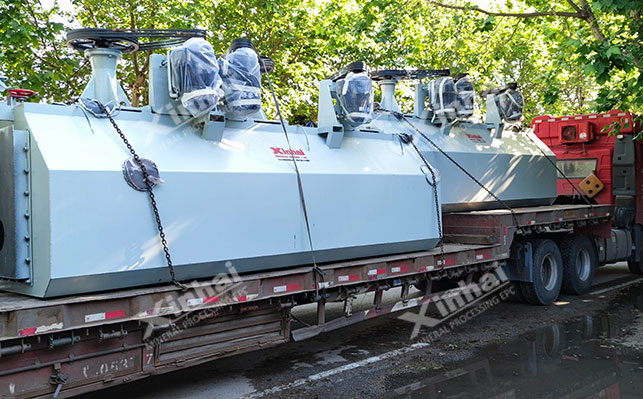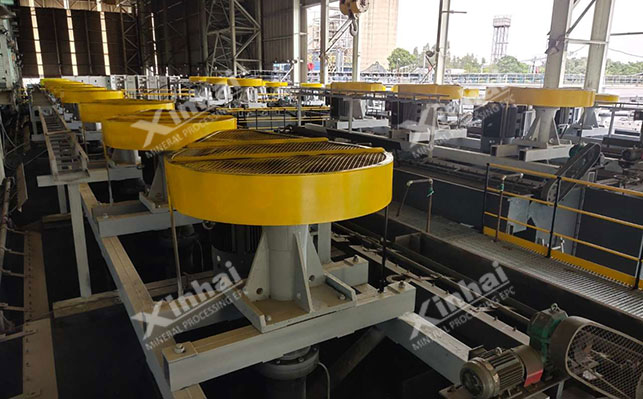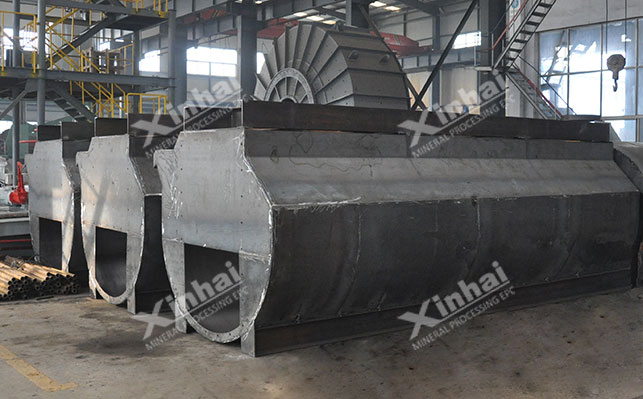
15311826613
Click to add WeChatPegmatite feldspar ore is widely used in the industrial field, but its raw ore is often accompanied by impurities such as quartz and mica, which seriously affects the quality and application range of feldspar. As an efficient mineral processing method, feldspar ore flotation plays a key role in the purification process of pegmatite , and is mainly used to achieve the effective separation of feldspar from impurities such as quartz and mica.

The flotation of pegmatite feldspar ore is based on the significant differences in the physical and chemical properties of the mineral surface. The properties of the mineral surface depend on factors such as its crystal structure, chemical composition, and the atomic arrangement of the crystal surface. In the flotation process, by adding specific flotation agents, the wettability of the target mineral surface can be changed in a targeted manner, changing it from hydrophilic to hydrophobic, thereby achieving attachment to bubbles and floating to the surface of the slurry, and separating it from other minerals.
Taking the separation of feldspar and quartz as an example, under the strong acidic condition of pH=2-3, the amine collector will combine with the hydrogen ions in the solution in the acidic pulp environment to form positively charged amine ions. However, due to its crystal structure characteristics, the surface of quartz will show negative charge characteristics under acidic conditions. Positively charged amine ions can selectively adsorb on the surface of quartz through electrostatic attraction and chemical adsorption, so that the surface of quartz is covered with a layer of hydrophobic hydrocarbon groups, thereby changing the surface wettability of quartz, making it hydrophobic and easy to float with bubbles.
Roughing stage: It is the starting link of the flotation process, and its main goal is to make the target mineral initially enriched in the pulp. At this stage, the pulp of suitable particle size after grinding and classification is sent to the flotation tank, and an appropriate amount of amine collector and frother are added. The role of the frother is to produce a large number of uniform and stable bubbles in the pulp to provide a carrier for the attachment of minerals. Under the action of the stirring device, the slurry and the reagent are fully mixed, and the collector is quickly adsorbed on the quartz surface, making it hydrophobic and colliding with bubbles. Since the roughing stage mainly focuses on the enrichment of the target mineral, the requirements for the concentrate grade are relatively low, but a high recovery rate must be guaranteed to separate as much quartz from the slurry as possible, providing a basis for subsequent concentration and scavenging operations.

Concentration stage: In the rough concentrate obtained after roughing, although quartz has been enriched to a certain extent, it is still mixed with some impurities such as feldspar, and the concentrate grade needs to be further improved. During the concentration process, an adjusting agent such as aluminum sulfate is usually added. Aluminum sulfate will undergo a hydrolysis reaction in the slurry to produce positively charged aluminum ions and sulfate ions. Aluminum ions can react with certain ions in the slurry to form a complex reaction, and can also enhance the adsorption of amine collectors on the quartz surface, further improving the adsorption stability and selectivity of the collector on the quartz surface. In addition, inhibitors such as water glass are added. Water glass is hydrolyzed in the slurry to form silicate colloids. The silicate colloids can selectively adsorb on the surface of feldspar, enhance the hydrophilicity of the feldspar surface, and inhibit its floating, thereby further reducing the content of impurities such as feldspar in the quartz concentrate and significantly improving the grade of the quartz concentrate. The selection operation is generally carried out multiple times. According to the properties of the ore and the product quality requirements, the process of "one roughing and three fines" or even more times of selection can be adopted to ensure that the final concentrate reaches a higher grade standard.
Sweeping stage: The purpose of sweeping is to recover the residual mesh quartz in the roughing tailings as much as possible and improve the overall recovery rate. During the sweeping process, the amount of collector and frother will be appropriately increased to enhance the collection of residual quartz. Since the quartz content in the sweeping tailings is relatively low and the surface properties of the mineral may have changed to a certain extent, increasing the amount of reagents will help increase the probability of quartz and bubbles adhering to each other, so that more quartz can be recovered. The concentrate obtained by scavenging is usually returned to the appropriate location of the roughing or concentrating operation and combined with other slurries for processing to fully utilize resources. The entire flotation process usually adopts a closed-circuit process of "one roughing, three concentrating and two scavenging". This process design can maximize the recovery rate while ensuring the grade of the concentrate, and realize the efficient beneficiation of pegmatite-type feldspar ore.
Mechanical stirring flotation machine: It is one of the most widely used equipment in the flotation of pegmatite-type feldspar ore. It mainly uses the high-speed rotation of the impeller to form a strong stirring effect in the flotation machine tank. The high-speed rotation of the impeller can not only fully mix the slurry with the air, but also generate a certain negative pressure, thereby inhaling a large amount of air and forming many tiny bubbles. At the same time, the stirring action makes the mineral particles in the slurry in a suspended and dispersed state, greatly increasing the collision chance of the mineral particles and the bubbles, accelerating the attachment process of the mineral particles and the bubbles, and realizing the flotation separation of minerals. Common mechanical stirring flotation machines include XJK type, SF type, etc.

Aerated flotation machine: adopts external air supply device, and presses compressed air into the flotation tank through a special aerator to form bubbles. The slurry stirring of the aerated flotation machine mainly relies on the flow and circulation of the slurry itself, rather than the stirring of the impeller. In the flotation tank, during the flow of the slurry, the mineral particles fully contact, collide and adhere to the bubbles, thereby realizing flotation. The significant advantage of this flotation machine is that the slurry flow state in the flotation tank is stable. The stable slurry flow state is conducive to the uniform contact and adhesion of minerals and bubbles, reduces the turbulence and collision loss of mineral particles in the slurry, and can effectively improve the grade and recovery rate of feldspar concentrate. Common aerated flotation machines include BF type, JJF type, etc.
Flotation column: It is a flotation equipment with a unique structure, and it also has important applications in the flotation of pegmatite feldspar ores. The slurry is fed from the top of the flotation column and flows downward under the action of gravity. Compressed air enters from the bottom of the flotation column through a special air distributor, forming a large number of small and uniform bubbles moving upward. During the reverse motion, the mineral particles and bubbles collide and adhere to each other, achieving the flotation separation of minerals. The bubbles attached with minerals float to the foam layer and are scraped out by the scraper to become concentrates, while the unfloated pulp is discharged from the bottom to become tailings. The flotation column can achieve continuous production and is suitable for the flotation operation of pegmatite feldspar mines with high requirements for concentrate grade. However, the flotation column has strict requirements on the particle size and concentration of the feed pulp, and accurate classification and concentration adjustment are required before feeding to ensure the stability of the flotation effect.
In summary, the flotation of pegmatite feldspar mines requires a carefully designed flotation process and the selection of appropriate flotation equipment to efficiently separate feldspar from impurities such as quartz and mica, providing strong technical support for the development and utilization of pegmatite feldspar mines.